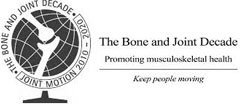Anterior Hip Replacement
Anterior Hip Replacement is a minimally invasive hip surgery to replace the hip joint without cutting through any muscles. The surgical procedure involves a small incision in front of the hip, anterior, as opposed to an incision on the side or back of the hip. It is referred to as a muscle sparing surgery because no muscles are cut to access the hip joint enabling a quicker return to normal activity.
Anterior Hip Replacement is a minimally invasive, muscle sparing surgery using an alternative approach to traditional hip replacement surgery. Traditionally, the surgeon makes the hip incision laterally, on the side of the hip, or posteriorly, at the back of the hip. Both approaches involve cutting major muscles to access the hip joint. With the anterior approach, the incision is made in front of the hip enabling the surgeon to access the hip joint without cutting any muscles. A special operating table is used that facilitates various anatomical positions enabling the surgeon to replace the hip joint anteriorly.
Benefits
Potential benefits of anterior hip replacement compared to the traditional hip replacement surgery, may include the following:
- Smaller incision
- Minimal soft tissue trauma
- Reduced post op pain
- Less blood loss
- Shorter surgical time
- Faster healing time
- Less scarring
- Earlier mobilization
- Less post-operative restrictions
- Reduced hip dislocations
- Decreased hospital stay
Surgical Procedure
Anterior Hip Replacement is performed in a hospital operating room under general or regional anesthetic depending on you and your surgeon’s preference. You will be placed supine, on your back, on a special operating table that enables the surgeon to perform your hip replacement anteriorly. Fluoroscopic imaging is used during the surgery to ensure accuracy of component positioning and to minimize leg length inequality.
The surgeon makes one incision to the front of the hip, about 4 inches long. The surgeon then pushes the muscles aside to access the hip joint to begin the replacement. At no time during the surgery are any muscles cut.
The femur (thigh bone) is separated from the acetabulum (hipbone socket).The acetabulum (socket) is prepared using a special instrument called a reamer. The acetabular component is then inserted into the socket. This is sometimes reinforced with screws or occasionally cemented.
A liner, which can be made of plastic, metal or ceramic material, is then placed inside the acetabular component. The femur (thigh bone) is then prepared. The femoral head which is arthritic is cut off and the bone prepared using special instruments to exactly fit the new metal femoral component.
The femoral component is then inserted into the femur. This may be press fit relying on bone to grow into it or cemented depending on a number of factors such as bone quality and surgeon’s preference. The real femoral head component is then placed on the femoral stem. This can be made of metal or ceramic. The artificial components are fixed in place.
The surgeon withdraws the instruments and sutures the incision closed. The incision is then covered with a sterile dressing.
Post-Operative Care
After surgery your surgeon will give you guidelines to follow. It is important that you follow your surgeons’ instructions for a safe and successful outcome. Normally, after a traditional hip replacement, your surgeon would give you instructions on hip precautions to prevent dislocating the new joint. Hip precautions are very restrictive and usually include the following:
- Avoid the combined movement of bending your hip and turning in your foot.
- You should sleep with a pillow between your legs for 6 weeks.
- Avoid crossing your legs and bending your hip past a right angle.
- Avoid low chairs.
- Avoid bending over to pick things up. Grabbers are helpful as are shoe horns or slip on shoes.
- An elevated toilet seat should be used.
For Anterior Hip Replacement patients, however, hip precautions are unnecessary. Because the muscles are not cut, the risk of dislocation is greatly lessened enabling the patient much more freedom of movement after surgery. Rehabilitation is much faster for patients as well due to less muscle trauma during the surgery.
Common post-operative guidelines after Anterior Hip Replacement include the following:
- You may bend your hip immediately after surgery and bear full weight when comfortable.
- Your surgeon will prescribe pain medications to keep you comfortable at home.
- Keep the incision clean and dry. You may shower once the dressings are removed unless otherwise directed by your surgeon.
- You will be given specific instructions regarding activity and rehabilitation. You will not have to follow standard hip precautions.
- Physical therapy will be ordered to restore normal hip function and strength.
- If you have increasing redness or swelling in the wound or temperatures over 100.5˚ you should call your doctor.
- If you are having any procedures such as dental work or any other surgery you should take antibiotics before and after to prevent infection in your new prosthesis. Consult your surgeon for details.
- Your hip replacement may go off in a metal detector at the airport.
- Eating a healthy diet and not smoking will promote healing.
Risks and Complications
As with any major surgery there are potential risks involved. The majority of patients suffer no complications following Anterior Hip Replacement; however, complications can occur following Hip surgery and include:
- Infection: Infections can occur superficially at the incision site or in the joint space of the hip, a more serious infection.
- Fractures: This is rare but can occur during or after surgery. This may prolong your recovery or require further surgery.
- Nerve damage: Trauma to nerves may be temporary or permanent and can cause numbness, tingling, pain, and weakness.
- Hemarthrosis: A condition caused by excess bleeding into the joint after the surgery is completed. This may require additional surgery to irrigate the joint and evacuate the blood.
- Blood clots (Deep Venous Thrombosis or DVT): A DVT can form in the calf muscles and can travel to the lung, a life threatening condition called pulmonary embolism. If you get calf pain or shortness of breath at any stage, you should notify your surgeon.
- Leg length inequality: It is very difficult to make the leg exactly the same length as the other one. The Anterior approach for Hip Replacement can improve this outcome however; there are some occasions when it is simply not possible to match the leg lengths. All leg length inequalities can be treated by a simple shoe raise on the shorter side.
- Wound irritation: Your scar can be sensitive or have a surrounding area of numbness. This normally decreases over time and does not lead to any problems with your new joint
- Wear: All joints eventually wear out. The more active you are the quicker this will occur. In general 80-90% of hip replacements survive 15years.
- Failure to relieve pain: This is rare but may occur especially if some pain is coming from other areas such as the spine.












